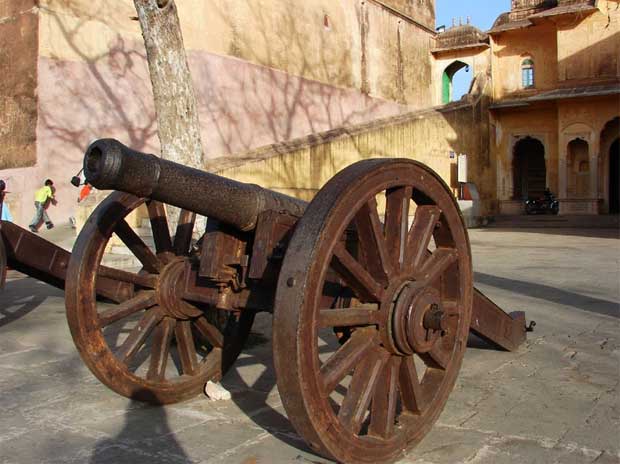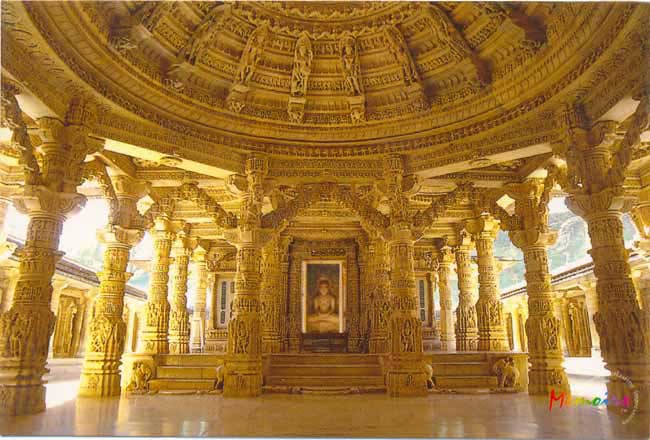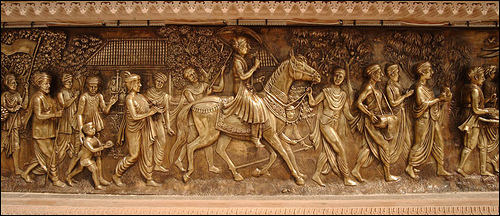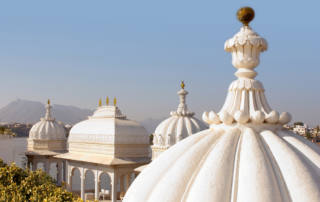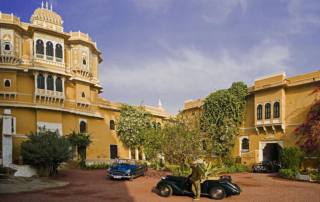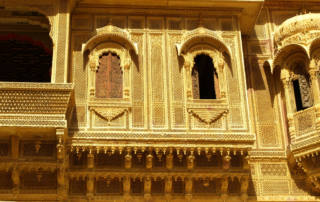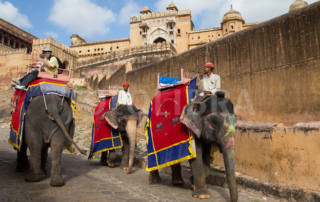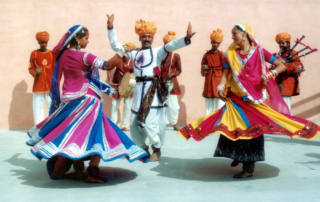11 DAYS/10 NIGHTS
Want to Know More About The Tour?
ABOUT
11 Days 10 Nights visiting Delhi-Udaipur -Jaipur -Ranthambhore-Agra
Delight your senses in colourful Rajasthan on this classical itinerary of the North. Visit the famous Taj Mahal, spot a tiger in Ranthambhore, discover opulent palaces and explore ancient forts – all this whilst lapping up legends of the Rajputs!
Pre-departure planning is important. Here are certain things you should watch for and plan for.
Visas
Check with the Indian consulate or embassy in your country to find out if you will need a visa to visit the country of your destination, especially for an extended period of time. Some countries have extremely detailed and complicated entry/departure laws and treat visits of a week or two very differently from longer stays.
Money
If you’re traveling to one area, check the cost of living there. If it’s high you’ll probably want to budget more carefully and save some money before leaving. The lower the cost of living the less you’ll have to save, but be sure to have a backup reserve in emergency cases.
General Tips
Talk to other people who have done a similar trip.
If you don’t know anyone personally, try any of the dozens of online travel websites full of first-person travel stories covering every possible type of trip.
Plan big and loose. Read everything you can about the area.
There may be sights and attractions you didn’t know about. A rough outline of your trip might have three or four target points and a variety of ways to get between them.
You don’t want to find out that the weather isn’t what you thought, or the guide book was incorrect, after committing to 6 weeks in a specific spot.
Some trips will allow you more leeway than others. Travel plans in Asia can often be made day-by-day while summer travel in Europe should be organized at least a few weeks ahead unless you’re prepared to hunt around for hotel rooms and train seats.
Set up a pre-trip timeline so you don’t end up with a full to-do list during your last week of work or school.
Things to consider are doctor’s visits for a check-up, inoculations, and prescription refills; purchasing plane tickets; renewing passports, and obtaining visas and other documents.
Check your insurance coverage abroad and purchasing additional travel insurance if needed. Don’t forget visiting friends and family members!e
The longer the trip, the lighter you should pack. This might seem strange, but it’s true you can afford to lug a heavy bag around for a week or two, but do you want to have anything extra for a year?
Stick to the absolute basics and know what you can and cannot buy at your destination(s). There’s no point in bringing 6 months of toothpaste to Europe or buying a sarong at home to take to the tropics. If you are visiting several climates, try to arrange it so you visit the warmer places first and the coldest last. That way you can purchase sweaters and long pants and not have to carry them any more than needed. Alternately, visit cold climates first and then ship unneeded layers home — or sell them off.
A good rule of thumb is to bring one outfit for the hottest day you’re likely to encounter, one for an average day, and one for the coldest.
Make sure everything goes with everything else (if that’s important to you), and remember that layers are always best.
Be prepared for uncomfortable trips. You will often find yourself in a busy, cramped, economy class environment and it could be for many hours – especially long plane trips.
If you want to arrive at your destination refreshed and able to enjoy the sights, then try a good quality travel pillow to support your head, some earplugs to block out the screaming babies, and an eye cover to block out the sun or cabin lights.
Just avoid those cheap U-shaped pillows from airport shops – your head drops forward and you wake up with a stiff neck.
Make contact with the locals before you go.
Maybe you have a friend-of-a-friend or a foreign exchange student from high school you remember, or just found a friend through a travel website; almost everyone is happy to welcome a foreign visitor to their hometown. This might be as elaborate as a homestay for a few weeks, or just coffee in their hometown or dinner at a local restaurant.
Getting Around
Make your own way or if there are too many great things to see, follow the lead of a guided tour.
A perfect city for exploring on foot with a shop around every corner. Much of the inner city can be walked without trouble, however, in parts walking includes crowds, uneven streets, heavy traffic, and skinny sidewalks. If that’s a problem, there are plenty of taxis to ride in and scooters to rent.
How to Travel
- Subway – The metro is the fastest transportation. Running 5 am to 10 pm every day in all the Major Cities of India.
- Bus & Train – Operated by an independent organization, buses, and trains include wifi access for the public. You can take any bus or train marked with the (B Public) sign for free.
- Taxi – Available in all parts of the city. From a restaurant or hotel, you can have them call the city taxi service.
- Car – Rental cars are easy to get and hotels have good parking prices. Once in the main city, you can often walk so we suggest returning the when you arrive.
- Bike – The best way to get around, other than walking, is by bike. If you don’t mind hills, you can bike anywhere. If that’s not for you, stick to the inner city with your bike.
Mini Trips
Just a few miles away you can explore the history and legacy, drink wine and relax. You can wander the hills or be lulled by the fountains. If you have time, the attractions can fill 3 days. We’ve highlighted the best ones here.
Tours
Because of the number of sights to see, some first-time visitors should start with an organized tour. Some things can be covered in-depth, others are just useful for getting your bearings.
The leading tour operators use local historians to lead their tours. Guides offer walking tours, including visits to monuments, museums, and historic locations, as well as eating tours. Tour prices can be high, but most participants consider them a trip highlight. In addition, there are many family related tours, sights, and more appealing activities for children.
Walking tours, like the 3-hour ghost tour, is exclusive in the early evening. A bus excursion ruins special tours as you’ve never seen. Also worth consideration, a group of art historians and architects do a theatrical retelling of dramatic scripts. Go on a tour, and expect guides to break out into a rendition of “Singing in the Rain”, it’s a lot of fun.
- Rickshaw Ride at chandni chowk (Old Delhi).
- Tiger Safari at Ranthambore .
- Elephant Ride at Amber Fort
- Boat Ride at Udaipur .
T ravel Resources
Travel planning is about more than just knowing where you’re going. Prepares to navigate, take control and be ready for anything. This section helps you steer clear of disaster and stay open to enjoy the unexpected.
Quick Tips
- Banks – Open Monday to Friday 9 am to 2 pm. Some banks are closed for lunch.
- Emergencies – For police, dial a local phone number; for an ambulance call a hospital.
- Internet Access – Wifi is standard in most hotels and free in many coffee shops.
- Mail – Buy stamps at the Post Office. Convenient post offices are located in all cities. Most are open Monday to Friday 9 am to 3 pm.
- Safety – Pickpocketing can be a common problem. It is suggested for men to keep wallets in their front pockets. Purse snatching also occurs at times.
Visitor Information
This site contains information with a very personal and friendly structure. It also has great links to other related sites online.
Information, internet access, maps, and train passes are available at local Tourist Information terminals. These are located at various sites around the city. Expect a wait if you arrive late in the afternoon or during lunchtime. Local travel agencies are also helpful for quick information and finding hotels. There is no service charge for these services. Hours are Monday to Friday 9am to 5pm, and Saturday 10am to 2pm.
Transportation
Getting in from the airport and other arrival locations. Travel planning is about more than just knowing where you’re going. Prepares to navigate, take control and be ready for anything. This section helps you steer clear of disaster and stay open to enjoy the unexpected.
- Plane – Flights arrive at the main airport near the city center. If flying from European cities, you might land at a connecting airport. There is a tourist information office at the Terminal, international arrivals, open 8 am to 6 pm.
- Train – A train station is on the lower level of the airport. To get into the city, follow the marked signs.
- Taxi – From the airport, there is a flat rate for the 1-hour trip, depending on traffic.
- Train & Bus – Trains and buses arrive at the city center. This is the transportation hub for the city and is surrounded hotels.
A perfect place for exploring on foot, with local shops around every corner. You will eventually walk somewhere, it’s just going to happen. If you don’t like crowds, uneven cobblestones, heavy traffic, or narrow sidewalks, take a taxi or rent a scooter.
Day 1: Delhi
Once you arrive in Delhi, you will be met at the airport and transferred to your hotel. The rest of the day is at leisure. Overnight – Delhi
Day 2: Old Delhi
This morning enjoy a sightseeing tour of Old Delhi taking in the impressive Red Fort – dating back to India’s Mughal period; Jama Masjid mosque – the final architectural extravagance of Emperor Shah Jahan and the colourful, if crowded, Chandni Chowk bazaar. This afternoon, enjoy a tour of New Delhi. Offering a real contrast to the congestion of Old Delhi, the open and relatively streamlined New Delhi was built as the imperial capital of India by the British.
Highlights include the majestic India Gate, Rajpath, and bustling Connaught Place. A visit is also made to Qutab Minar, a massive tower built to proclaim the arrival of Islam in India in the 11th century and a carpet emporium. Overnight – Delhi.
Day 3: Agra
Today, journey to Agra, once the capital of India under the Mughals. We take an exotic horsecart or rickshaw ride to the legendary Taj Mahal. Built entirely of white marble it has no peers. Witness first-hand, the efforts Emperor Shah Jahan went to in constructing the immense mausoleum, stunningly studded with semi-precious stones for his beloved wife, Mumtaz. Visit Agra Fort, which has some of the finest Mughal buildings in India behind its walls, followed by a tour of a marble craft shop. Overnight – Agra.
Day 4: Ranthambhore NP
This morning tour and explore the fascinating former Mughal city of Fatehpur Sikri – Emperor Akbar’s vision in red sandstone. Early afternoon board the train Kota Jan Shatabdi Express (air-conditioned chair car) to Sawai Madhopur station and onward transfer to Ranthambhore National Park. The remainder of the afternoon at leisure. Overnight – Ranthambhore NP.
Day 5: Ranthambhore NP
Ranthambhore National Park is one of the prime examples of Project Tiger’s conservation efforts in Rajasthan. Sprawling across an area of some 1334 sq. km, Ranthambhore is scenically beautiful. Set amidst a landscape of hills, lakes, and rivers, the park boasts an impressive 10th-century fort. The park terrain fluctuates between impregnable forests and open bushland. The entire forest is peppered with ruined pavilions and small domed, Mughal kiosks known as chhatris. In addition to the Bengal tiger, Ranthambhore is home to wild boar, nilgai, sambar deer, and a variety of birds. Tiger spottings are more common in the morning or late afternoon, especially if hunting or tending to their young. Venture on morning and afternoon game drives in shared jeeps or Canters. Overnight – Ranthambhore NP.
Day 6: Jaipur
Indulge with a final game drive this morning before our afternoon transfer to Jaipur. Jaipur is affectionately known as the ‘Pink City’ as Maharaja Ram Singh had all of the Old City painted a welcoming pink in 1876 to herald a visit by the Prince of Wales (later King Edward VII), it is also the bustling capital of the state of Rajasthan. Overnight – Jaipur.
Day 7: Jaipur
This morning, travel beyond Jaipur to the 16th century Amber Fort. An exotic elephant ride transports us to the lofty fort, where we’ll enjoy a tour of this Rajput extravaganza. Later in the afternoon, we tour the City Palace, which boasts an interesting museum of regal attire, and Jantar Mantar, an ancient astronomical observatory. The 18th-century observatory is the largest and best-preserved of five observatories built by the astronomer prince, Jai Singh II. He had the huge stone structures built to measure time, chart the declination of celestial bodies and predict eclipses. The observatory complex is remarkably fascinating. Jaipur is additionally renowned for its wonderful silks, saris, and intricate beading. This evening there is time to shop in the colourful local markets or visit a tailor. Good quality tailors are very capable of whipping up European-style clothing and other garments meeting your specification, at a fraction of prices charged for tailoring in the West. Also, most will often deliver your freshly sewn garments to your door. Overnight – Jaipur.
Days 8 – 9: Udaipur
Take a mid-morning flight south to Udaipur, which was founded in 1568 by Maharana Udai Singh II. An oasis of cool, with its massive and Venetian-like appearance, Udaipur is one of the most romantic towns in Rajasthan. A favourite amongst the wealthy and the elite, Udaipur is full of palaces and temples. Spend the afternoon at leisure enjoying our wonderful hotel facilities. On Day 9, you’ll enjoy a cruise on Lake Pichola, plus touring of the imposing City Palace, a vision in soft yellow stone on the northeast promontory with breathtaking views of the lake. The City Palace is the largest palace complex in Rajasthan. Free time to explore the palace or perhaps shop for colourful Rajasthani arts and crafts and Indian spices. Overnight – Udaipur.
Day 10: Delhi
Departure transfer to the airport for our morning flight to Delhi. The afternoon is free for you to relax by the hotel pool and bar or consider venturing out to further explore this vibrant city. Overnight – Delhi
Day 11: Delhi
Hotel check-out and included onward transfer to the airport.
RELATED TOURS:

